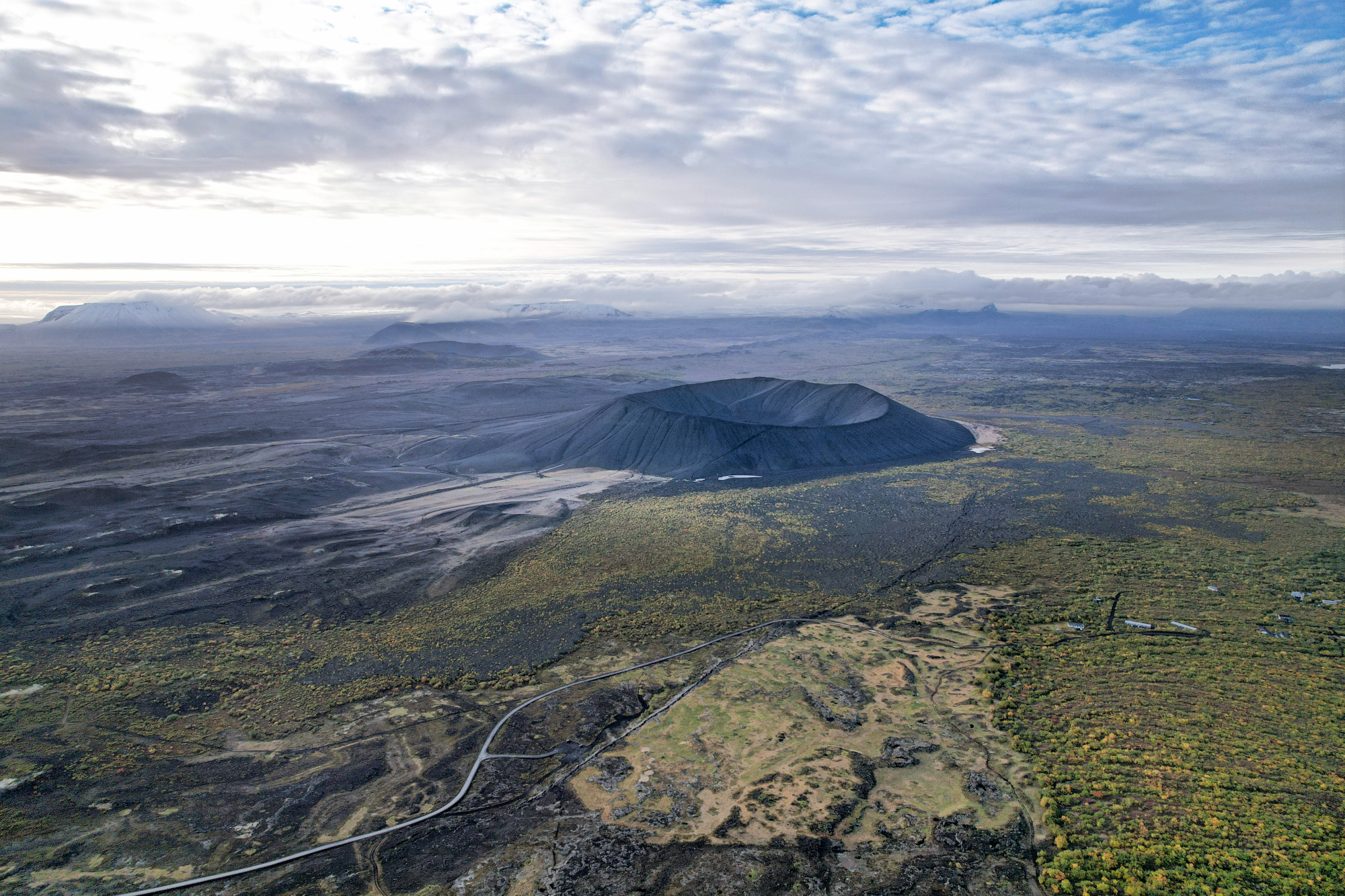5 min to read
CoEvolve marks 4 years. Where are we?
CoEvolve at 4 - progress and insights

Recently, the CoEvolve project turned 4 years old. We have slightly less than 1 year before the project will end. Where do we stand with our objectives and results?
The project CoEvolve was funded by the European Research Council with an ERC Starting grant back in 2020. Its goal is to study how trace metals provided by planetary processes can influence microbial functional diversity. It uses microbes from extreme places on Earth to learn more about how Earth and Life evolved together.
Cover image: a view from the drone of north-west Island lanscape. Image credits: Jacopo Pasotti
Microorganisms are fundamental for the functioning of the planet and have been the driving force in cycling nutrients and elements since the origin of life on this planet. To control nutrient and element cycling, microorganisms use a complex set of proteins that contain metals at their core used to efficiently control chemical reactions. Because of this relationship, metals and trace elements are crucial for life. At the heart of the CoEvolve project is the idea that the availability of these metals controls what type of chemical reaction the microbes can access, ultimately influencing nutrient and element cycling. The availability of metals has dramatically changed during the history of our planet, largely because of the change in oxygen concentrations in the atmosphere. So metals might have controlled to a certain extent the evolution of microbial life itself.

Sampling in the Puna Plateau in Argentina. Image credits: Jacopo Pasotti
For the past 4 years the CoEvolve team members have been busy on different fronts. We have set up and organised 3 new laboratories filled with equipment to carry out all the relevant analyses. One of the labs focuses on the microbiology and microbial physiology of microorganisms, the second lab is equipped for molecular biology, DNA extraction and prepping for sequencing. The third lab is focused on geochemistry, and especially on the analysis of trace metals.
Aside from setting up the labs and protocols, we have been busy in the field, perhaps the most visible of our activities. We have thus far sampled in several different countries for the project, including Italy, Chile, Argentina, Costa Rica, Island, Greenland, USA, Svalbard, the East Pacific Rise, Mongolia and New Zealand, along with other minor sampling efforts. These expeditions collected key data from very different tectonic settings, ranging from middle ocean ridges to subduction zones and volcanic hot spots. The samples and the data collected are being analized, to identify top down (i.e. large scale) ecosystem level correlations between the availability of trace metals and microbial functional diversity. We have also worked in the lab to study these relationships using so-called model organisms, and testing how different metals influence directly what they can do, how they live and more recently how they compete.

The distribution of tamperature, pH and salinity of the sites sampled around the world.
What have we found so far?
We have demonstrated that the availability of selected metals is fundamental in controlling microbial functional diversity. That is, if you have a metabolic substrate ( a type of food for the microbes) that you like more than another for whatever reason (usually due to the amount of energy that it can provide), you can use it only if you have the right trace metal available to use as a tool in your enzymes. This is a big deal, because sometimes microbes compete for the same resources but with different tools (metals), and the availability of the tool can make massive differences. Let’s make it simple, if you are competing for a soup, but use different tools to eat it, the person with a spoon will be faster than someone with a fork. But if there are no spoons available, those with the fork will beat spoon users left without their preferred tool. We think our results open up a range of incredible opportunities in interacting with the microbial world and understanding microbial competition and evolution.

Trace metals in the biogeochemical cycle. Reproduced from Hay Mele et al. 2023
We have also found nice correlations in environmental samples, where the abundance of trace metals correlates with genes that use them. This is extremely interesting because the amount of trace metals is controlled through a variety of processes that scale from cosmic to microbial. Having all of them makes a huge difference in what microbes can do locally. We are writing up the main papers on this, but we have already published a paper discussing the role of this in biogeochemical cycles (the biological recycling of elements at the planetary scale) and the importance of considering this in astrobiology and the search for life in the universe.
So, what’s left?
We still have a few sampling expeditions to do to complete our dataset. Furthermore, the team is now busy completing laboratory analysis and summarizing the results. We expect some of the major publications from the project to come out in the next few months, and we expect to wrap up everything in time for the end of the project.
However this will not be the end, but just the start. All our data show that the ERC CoEvolve initial hypothesis was correct, and this opens up a large number of possibilities and new exciting venues. The real impact of this project will emerge in the next 10 years, as we explore in different disciplines and application fields the implications of our findings.
Meanwhile, keep posted for future updates and follow us on the www coevolve.com website and on social media with the tag #extremegeobiology.
